
Return 1959 Class Home page
Class of 1959
Last update September 22, 2025
Fast Food Beginnings
These photos below of the first fast food restaurants were sent to me by Jeff Millham. Origin?
Hope these bring back some good memories of our growing up. See more here.
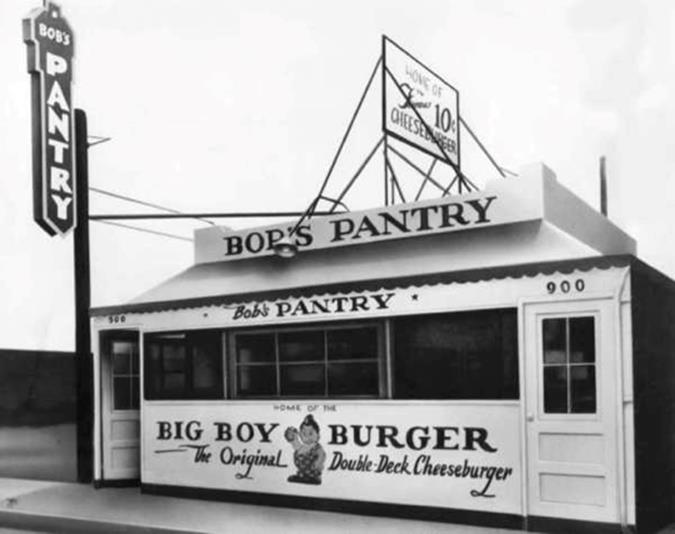
Bob's Big Boy – Opened 1936 as Bob's Pantry at 900 E. Colorado Blvd. in Glendale, California. The chain is best known for its trademark chubby boy in red-and-white checkered overalls holding a Big Boy sandwich (double-decker cheeseburger). The inspiration for Big Boy's name, as well as the model for its mascot, was Richard Woodruff (1932–1986) of Glendale, California. When he was six years old, Woodruff walked into the diner Bob's Pantry as Bob Wian was attempting to name his new hamburger. Wian said, "Hello, Big Boy" to Woodruff, and the name stuck. Warner Bros. animation artist Ben Washam sketched Richard's caricature, which became the character seen on the company trademark. - wikipedia. Only legacy restaurant left in California is at 4211 W. Riverside Dr., Toluca Lake/Burbank Three others came after the chain was sold are still operating in Northridge, Downey and Norco..
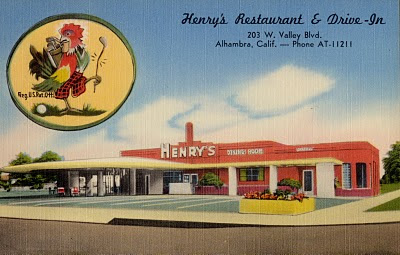
Photo courtesy of Elisabeth L. Uyeda, Los Angeles Revisited.
Henry's Hamburgers - In 1954 the Bresler's Ice Cream Company decided to expand into the growing fast-food drive-in industry. Company executives were looking for a new outlet to promote higher sales of their malts and shakes without altering their existing ice cream shop franchises. Under the name Henry's Hamburgers a large number of franchises were eventually established. The name Henry was chosen to honor the memory of the late Henry Bresler, one of the brothers who had founded the ice cream company. Henry's was modelled after James Collin's Hamburger Handout restaurants in Southern California which in turn had been modelled after the McDonald brother's San Bernardino operation. They were both a Chicago area competitor and copy of McDonald's. Just two years later, by 1956, Henry's Hamburgers had thirty-five locations in the Chicago area. By the early 1960s there were over two hundred Henry's restaurants across America with operations headquarters in Chicago. At the time that outnumbered some of the industry's current giants, such as McDonald's. Henry's used the advertising slogans "Aren't you hungry for a Henry's?" and "Head for Henry's", and offered burgers for as low as 15 cents or "ten burgers for a buck".
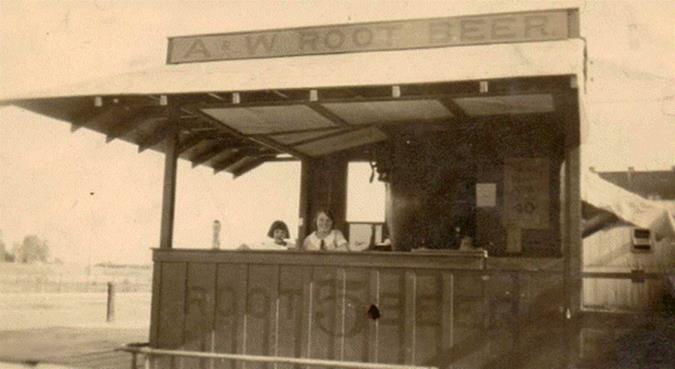
A&W began in June 1919, at 13 Pine Street in Lodi, California, when Roy W. Allen opened his first root beer stand. Two years later, Allen began franchising the drink, arguably the first successful food-franchising operation. His profits came from a small franchise fee and sales. The following year, Allen partnered with Frank Wright to help Wright with the root beer business he had started that year. They branded their product A&W Root Beer. Some historians and secondary school textbooks concur that A&W, which opened in 1919 and began franchising in 1921, was the first fast food restaurant.
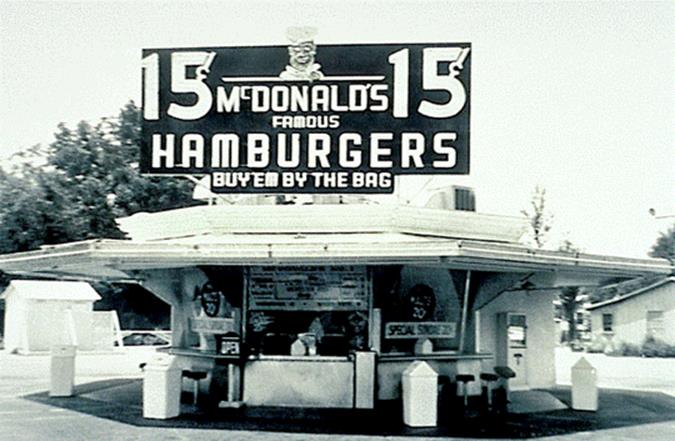
McDonald’s – Opened 1937 in Monrovia, California. The McDonald family moved from Manchester, New Hampshire to Hollywood in the late 1930s, where brothers Richard and Maurice McDonald began working as set movers and handymen at Motion-Picture studios. In 1937, their father Patrick McDonald opened “The Airdrome”, a food stand, on Huntington Drive (Route 66) near the Monrovia Airport in Monrovia, California with hot dogs being one of the first items sold. Then Hamburgers came along and were ten cents with an all-you-can-drink orange juice at five cents. In 1940, Maurice and Richard (“Mac” and “Dick”) moved the entire building 40 miles (64 km) east, to West 14th and 1398 North E Streets in San Bernardino, California. The restaurant was renamed “McDonald’s Bar-B-Que” and had twenty-five menu items, mostly barbecue.
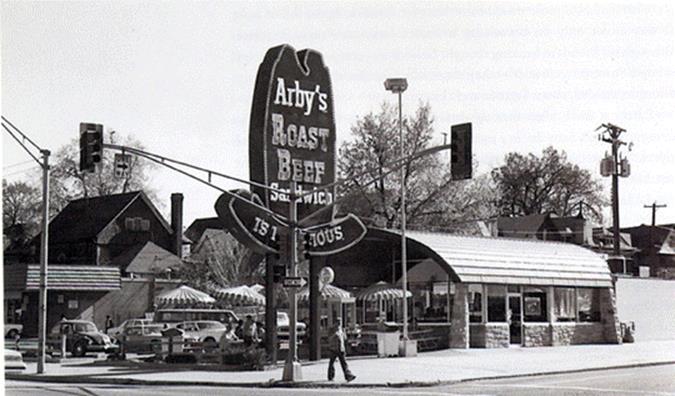
Arby’s – Opened 1964 in Boardman, Ohio, just ourside of Youngstown. The Raffel brothers wanted to call their restaurants "Big Tex", but that name was already used by an Akron business. Instead, they chose the name "Arby's," based on R. B., the initials of Raffel Brothers. They initially served only roast beef sandwiches, potato chips, and soft drinks. Hoping to attract a more upscale clientele, Arby's interior design was purposely more luxurious in appearance than the typical fast food sandwich stand of the day. Arby's offered their roast beef sandwiches for $.69 at a time when hamburger stands were charging $.15 for a hamburger. A year later, the first Arby's licensee opened a restaurant in Akron, Ohio. The famous Arby's "hat" was designed by the original sign makers, Peskin Sign Co. - wikipedia
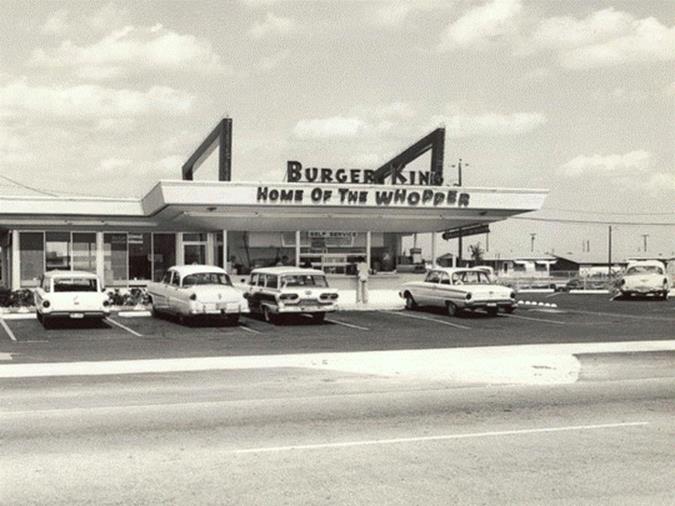
Burger King - The predecessor to Burger King was founded in 1953 in Jacksonville, Florida, as Insta-Burger King. After visiting the McDonald brothers’ original store location in San Bernardino, California, the founders and owners (Keith J. Kramer and his wife’s uncle Matthew Burns), who had purchased the rights to two pieces of equipment called “Insta” machines, opened their first restaurants. Their production model was based on one of the machines they had acquired, an oven called the “Insta-Broiler”. This strategy proved so successful that they later required all of their franchises to use the device. After the company faltered in 1959, it was purchased by its Miami, Florida franchisees, James McLamore and David R. Edgerton. They initiated a corporate restructuring of the chain, first renaming the company Burger King They ran the company as an independent entity for eight years (eventually expanding to over 250 locations in the United States), before selling it to the Pillsbury Company in 1967.
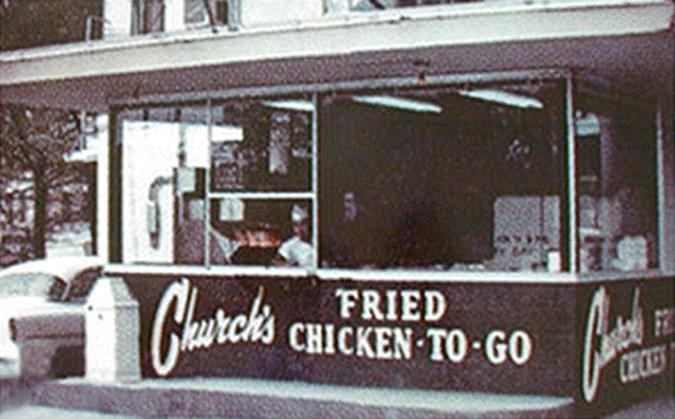
Church’s Chicken – Opened 1952 in San Antonio, TX across the street from The Alamo. The chain was founded as Church's Fried Chicken To Go by George W. Church and has more than 1,700 locations in 25 countries. It is known in Asia as Texas Chicken. Church's became the second largest chicken restaurant chain in 1989, when it merged with Popeyes Chicken & Biscuits. - wikipedia
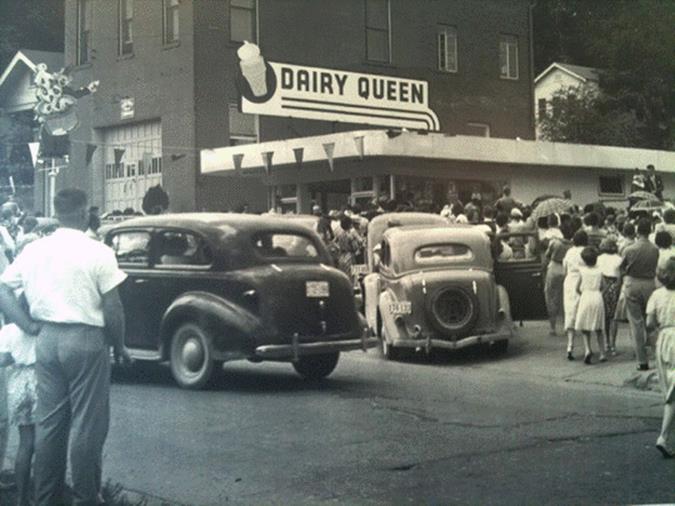
Dairy Queen – Opened 1940 in Joliet, Illinois. The soft-serve formula was first developed in 1938 by Douds, Iowa-born John Fremont "J.F." "Grandpa" McCullough and his son Alex. They convinced friend and loyal customer Sherb Noble to offer the product in his ice cream store in Kankakee, Illinois. On the first day of sales, Noble dished out more than 1,600 servings of the new dessert within two hours. Noble and the McCulloughs went on to open the first Dairy Queen store in 1940 in Joliet, Illinois. While this Dairy Queen has not been in operation since the 1950s, the building still stands at 501 N Chicago St. as a city-designated landmark. At the end of fiscal year 2014, Dairy Queen reported over 6,400 stores in more than 25 countries; about 4,500 of its stores (approximately 70%) were located in the United States. Since 2012, all Dairy Queen locations feature Orange Julius drinks. Except for the select few stores under private ownership. - wikipedia.
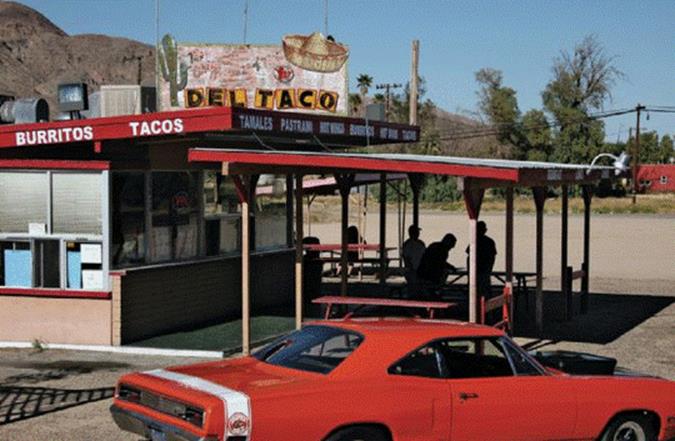
Del Taco – The first Del Taco restaurant was opened by Ed Hackbarth and David Jameson in Yermo, California, on September 16, 1964. On the first day of business, Del Taco made $169. Success of the first restaurant led to two in Barstow, one in Needles, and a fifth restaurant in Corona (the first Del Taco with a drive-through window). Dick Naugle, who installed the kitchen equipment in the Corona store, was impressed by the design and joined Hackbarth and Jameson in the fledgling business. In 1966, the trio founded Red-E-Food Systems, Inc., with the idea of franchising the Del Taco brand. That same year, the original Del Taco sun logo was created, and, in 1967, Del Taco introduced their now famous bean and cheese burrito with green or red sauce to their menu. Before long, the restaurants were being founded throughout Southern California. - wikipedia.

Dominos – Opened 1960 in Ypsilanti, Michigan. In February 2018, the chain became the largest pizza seller worldwide in terms of sales with over 5000 in the USA and 3000+ internationally. June 2018, Domino's began repairing potholes in America as part of its "Paving for Pizza" initiative to prevent its pizzas from being damaged in transit. - wikipedia
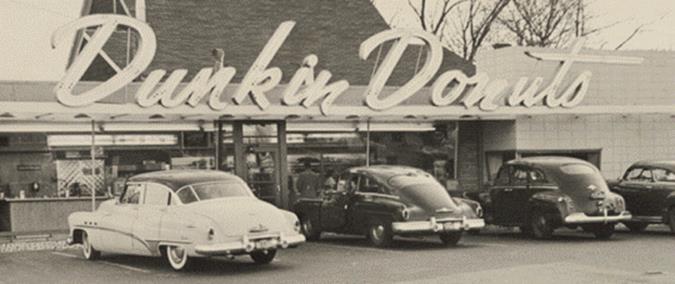
Dunkin’ Donuts – Opened 1950 in Quincy, Massachusetts. This donut and coffeehouse has become one of the largest coffee and baked goods chains in the world, with more than 12,000 restaurants in 36 countries. In 1990, they merged with Baskin-Robbins. - wikipedia
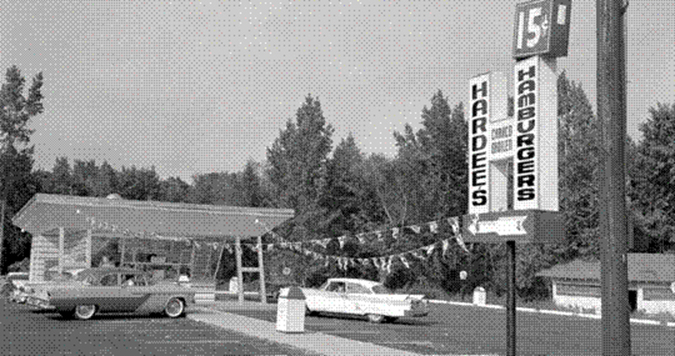
Hardee’s – Opened 1960 in Rocky Mount, North Carolina
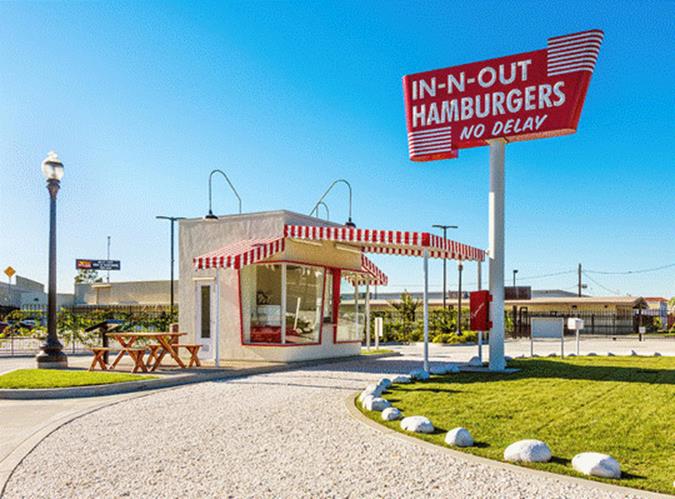
In-N-Out Burger – In-N-Out's first location was opened in the Los Angeles suburb of Baldwin Park, California, in 1948 by the Snyders at the southwest corner of what is now the intersection of Interstate 10 and Francisquito Avenue. The restaurant was the first drive-thru hamburger stand in California, allowing drivers to place orders via a two-way speaker system. This was a new and unique idea, since in post-World War II California, carhops were used to take orders and serve food. The second In-N-Out was on the corner of Azusa Canyon Road and San Bernardino Road, the third was in Pasadena and the fourth was opened west of the intersection of Grand Avenue and Arrow Highway in Covina, California, In the late 1950’s. The company remained a relatively small southern California chain until the 1970s. The Snyders managed their first restaurants closely to ensure quality was maintained. The chain had 18 restaurants when Harry Snyder died in 1976, at the age of 63. - wikipedia
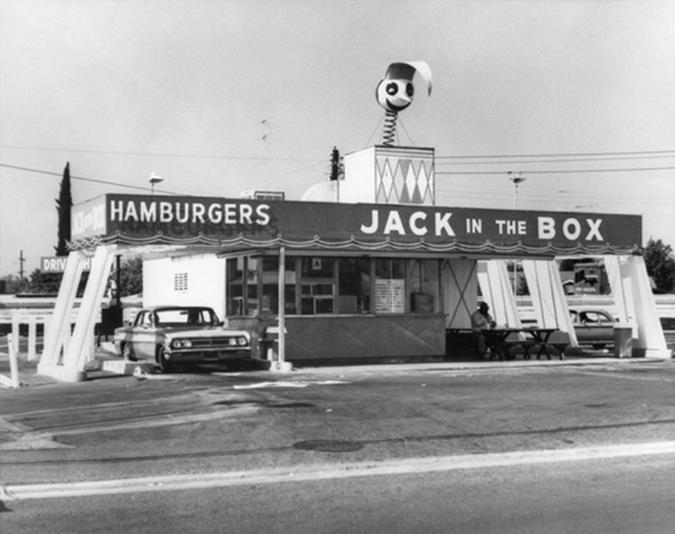
Jack in the Box – In 1951, Robert Peterson converted the El Cajon Boulevard, San Diego Topsy's location into Jack in the Box, a hamburger stand focused on drive-through service. While the drive-through concept was not new, Jack in the Box innovated a two-way intercom system, the first major chain to use an intercom and the first to focus on drive-through. The intercom allowed much faster service than a traditional drive-up window; while one customer was being served at the window, a second and even a third customer's order could be taken and prepared. A giant clown projected from the roof, and a smaller clown head sat atop the intercom, where a sign said, "Pull forward, Jack will speak to you." The Jack in the Box restaurant was conceived as a "modern food machine," designed by La Jolla, California master architect Russell Forester. Quick service made the new location very popular. - wikipedia

Kentucky Fried Chicken – Opened 1930 in North Corbin, Kentucky. Before it was called KFC, Harland Sanders, began selling fried chicken from his roadside restaurant in Corbin, Kentucky, called Sanders Court & Café. The first “Kentucky Fried Chicken” franchise opened in Utah in 1952
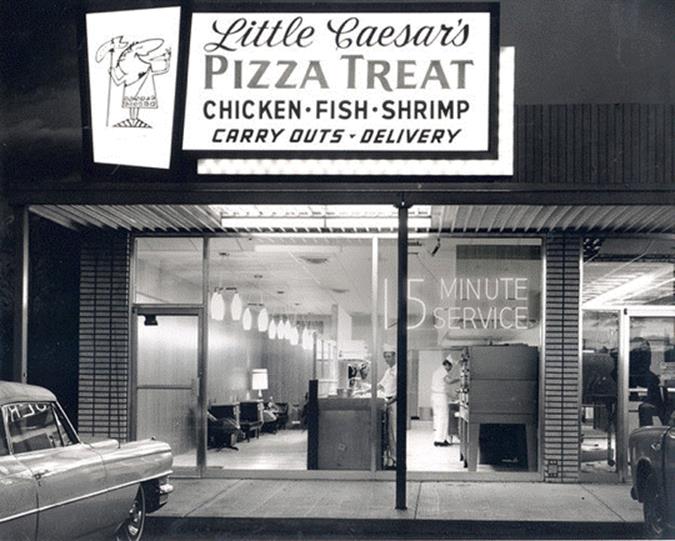
Little Caesar’s – Opened 1959 in Garden City, Michigan.
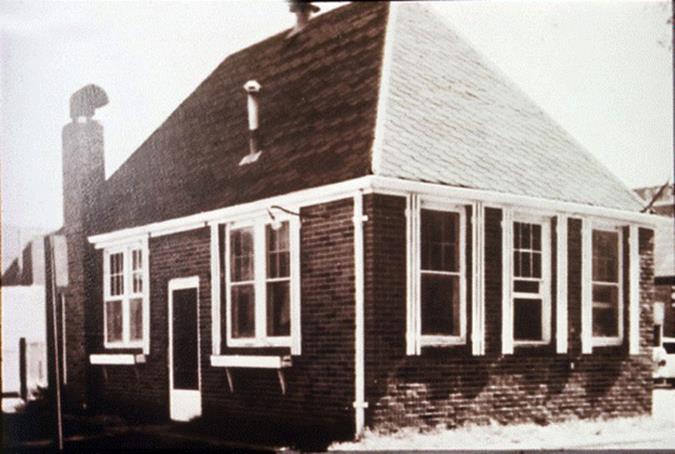
Pizza Hut – Opened 1958 in Wichita, Kansas. Pizza Hut was founded in 1958 by two Wichita State University students, Dan and Frank Carney, at a single location in Wichita, Kansas.

Sonic – Troy Smith opened a root beer stand called Top Hat in 1953, which brought regular profits of 20% annually. While driving near the Texas–Louisiana border, he pulled into a fast food restaurant that used a series of intercoms at each parking spot to allow customers to place orders directly from their cars. Smith obtained the design of the communication system and put it in place at Top Hat, allowing customers to place orders and have them delivered to their car within three minutes by carhops on roller skates. In Smith's version of the drive-in, parking was angled to afford greater privacy, and the speakers would play popular music for patrons while dining. As the Top Hat name had already been trademarked, he renamed the restaurants as Sonic in 1959, with the slogan "Service with the Speed of Sound". In an effort to expand the number of locations and bring in new talent, Sonic pursued a franchise-based model which had a new location opening daily, on average, in the late 1970s, though an economic turndown saw the closure of 300 of the chain's 1,300 restaurants in the early 1980s. He stepped down from operating the firm in 1983 but retained a seat on the company's board. By the time of his death, the chain operated in 42 states at some 3,600 locations. - wikipedia

Subway – Opened 1965 in Bridgeport, Connecticut.
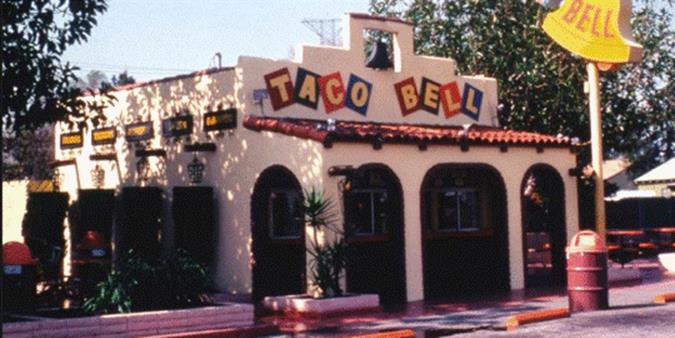
Taco Bell – Opened 1962 in Downey, California. Taco Bell was founded by Glen Bell, an entrepreneur who first opened a hot dog stand called Bell's Drive-In in San Bernardino, California in 1948. Bell watched long lines of customers at a Mexican restaurant called the Mitla Cafe, located across the street, which became famous among residents for its hard-shelled tacos. Bell attempted to reverse-engineer the recipe, and eventually the owners allowed him to see how the tacos were made. He took what he had learned and opened a new stand under the name of Taco-Tia in late 1951 or early 1952, which sold tacos. Eventually over the years, Bell owned and operated a number of El Taco restaurants in southern California. Bell would sell the El Tacos to his partner and built the first Taco Bell in Downey in 1962. The first Taco Bell franchise opened in Torrance in 1964, and by 1967, the company was growing rapidly, opening its 100th restaurant in the same year. - wikipedia
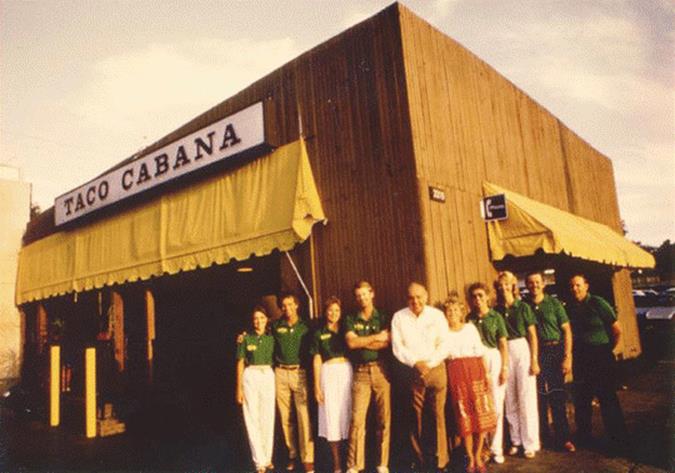
Taco Cabana – Opened 1978 in San Antonio, Texas.
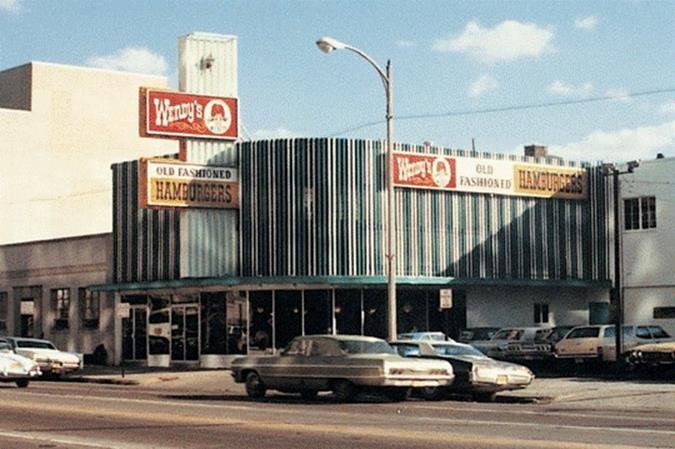
Wendy’s – Opened 1969 in Columbus, Ohio.
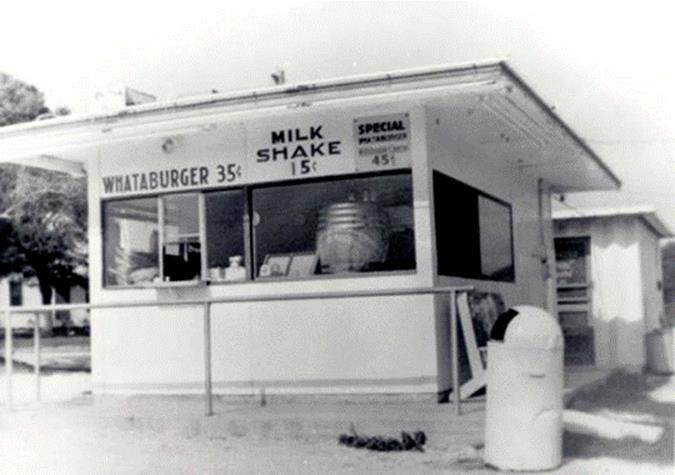
Whataburger – Opened 1950 in Corpus Christi, Texas.
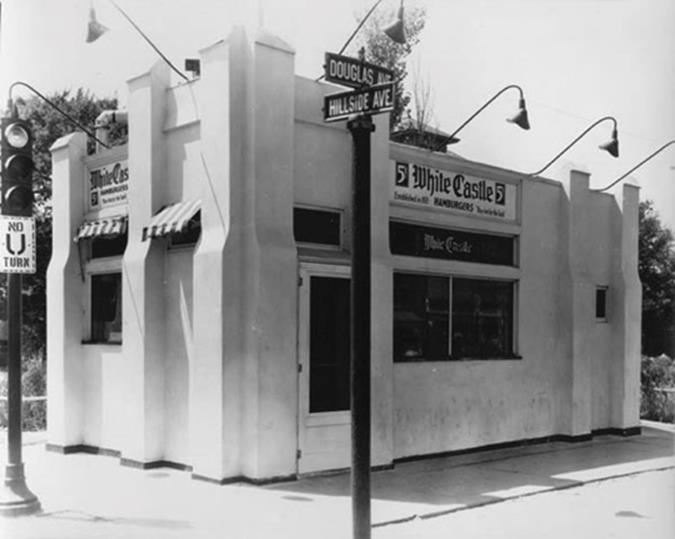
White Castle – Opened 1921 in Wichita, Kansas. White Castle is generally credited with opening the second fast-food outlet in Wichita, Kansas in 1921, selling hamburgers for five cents apiece from its inception and spawning numerous competitors and emulators. What is certain, however, is that White Castle made the first significant effort to standardize the food production in, looks, and the operation of fast-food hamburger restaurants.William Ingram’s and Walter Anderson’s White Castle System created the first fast food supply chain to provide meat, buns, paper goods, and other supplies to their restaurants, pioneered the concept of the multistate hamburger restaurant chain, standardized the look and construction of the restaurants themselves, and even developed a construction division that manufactured and built the chain’s prefabricated restaurant buildings. The McDonalds’ Speedee Service System and, much later, Ray Kroc’s McDonald’s outlets and Hamburger University all built on the principles, systems, and practices that White Castle had already established between 1923 and 1932.